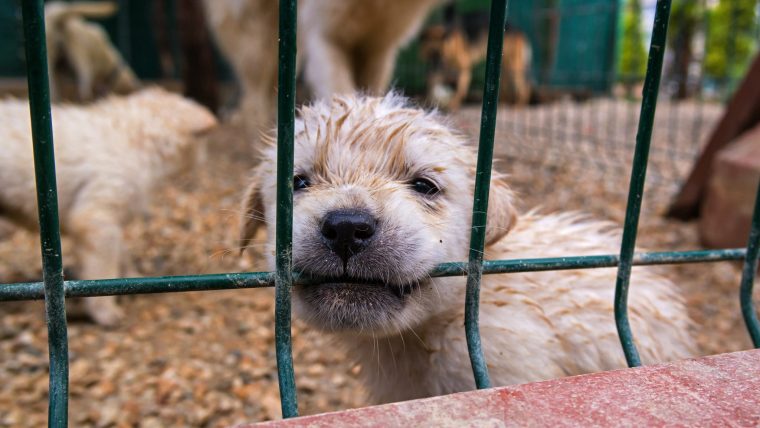And Why Does It Only Apply To Some Animals In Terms Of The Law In This Country?
In the United States, beast protection laws can be enacted and enforced at every level of authorities.
About animal protection legislation happens at the state level. There are also a handful of federal animal protection laws. Additionally, some cities and counties pass ordinances to protect animals.
This is why it's critically important to advocate for better beast protection laws with lawmakers in all regime bodies. Each has the power to assistance.
Federal Animal Protection Laws
There are only a handful of federal creature protection laws:
The Animal Welfare Act: Signed into law in 1966, the Brute Welfare Act (AWA) is the primary federal animal protection police force. The AWA mainly involves animals kept at zoos and used in laboratories, every bit well as animals who are commercially bred and sold like those in puppy mills.

The AWA directs the Secretary of the United States Section of Agronomics to prepare minimum standards regarding these animals' "handling, care, treatment, and transportation." Dog fighting and cockfighting are also prohibited nether the Fauna Welfare Human activity, and then long equally the activity in some way crosses state lines.
The AWA itself, as well as its enforcement past the Section of Agriculture, are often criticized for allowing inhumane practices to become unchecked.
The "28 Hour Law": This law, enacted in 1873, requires vehicles transporting sure animals for slaughter to end every 28 hours to let the animals practice, nutrient and h2o. The law does non apply if the vehicle in which animals are being transported contains access to food or water, and there are many other exceptions as well. Birds like chickens and turkeys, which are the virtually-farmed animals in the United States, are considered exempt by the federal government.
The Humane Slaughter Act, or the Humane Methods of Livestock Slaughter Act : This law was first passed in 1958, then amended in 1978. The Humane Methods of Slaughter Act requires that animals be stunned into unconsciousness before slaughter, to minimize pain.
Though chickens, turkeys and other birds feel pain only like other animals, they are not protected by this law. Enforcement of this law has been found by regime inspectors to be "inconsistent."

The Endangered Species Act : Enacted in 1973, the Endangered Species Act protects fish, mammals and birds – too as plants – listed as threatened or endangered in the Usa and across. The ESA outlines procedures for federal agencies to follow regarding listed species, likewise as criminal and civil penalties for violations. This police force is chiefly administered by the U.Due south. Fish and Wild animals Service and the U.S. National Oceanic and Atmospheric Administration Fisheries Service.
The PACT (Preventing Animal Cruelty and Torture) Act: Signed into law in 2019, the PACT Human activity makes some of the most egregious forms of animal cruelty — specifically crushing, burning, drowning, suffocating, impaling or sexual exploitation — in or affecting interstate commerce or within the territorial jurisdiction of the United states a federal crime.
The Beast Crush Video Prohibition Human activity banned the creation and distribution of so-chosen "crush videos" — where people torture, crush, and kill small-scale animals, such as puppies and hamsters, for the titillation of viewers — in 2010. The PACT Act goes a step further and bans the underlying animal cruelty contained in them.
The vast bulk of animal cruelty laws are at the state level. The PACT Act creates a respective federal animal cruelty statute. While the PACT Act is a significant step frontward for animals, information technology's important to note its limitations. Among its numerous exemptions are "customary and normal" agronomical and veterinary practices likewise as slaughtering animals for food.
The Lacey Human activity: Enacted in 1900, the Lacey Act bans illegal wildlife trafficking. It was the starting time federal law protecting wildlife. Specifically, it prohibits trade in wildlife and plants that accept been illegally taken, possessed, transported, or sold. It as well prohibits the falsification of documents regarding the sale and shipment of wild animals. For example, the Lacey Act can be used to prosecute a dealer who sells endangered turtles smuggled from Costa Rica or a roadside zoo who falsifies documents to sell a tiger cub beyond state lines.
Country And Local Animal Protection Laws
Most brute protection laws are enacted and enforced at the country level.
Because in that location are then many state laws involving brute protection, this won't exist a detailed guide, but an overview of the types of laws you'll generally find at the state level. We recommend y'all check out the Animal Legal Defence Fund'due south annual Rankings Report on the all-time and worst states for animal protection laws for more than in-depth information.
State animate being protection laws are primarily concerned with companion animals, though in that location are besides some land wild animals protection laws. Farmed animals and animals used in laboratories are often excluded from land animal protection laws, as are wildlife in some contexts.
Each of the 50 states now has a felony animal cruelty police on the books. Each state determines what constitutes cruelty, and the penalties for committing cruelty.
Companion animals:
Companion animals – a category often limited to dogs and cats, but that sometimes includes birds, horses, and other animals as well – usually receive the strongest level of protection under land laws. All the same, in that location have been cases where someone has been prosecuted for having committed egregiously cruel acts against wildlife or farmed animals.
This tin can even extend to marine animals. In 2017, iii Florida teenagers were charged with animate being cruelty for their torture of a shark.
Each state besides has laws governing some aspects of the "hands-on" care of animals. For example, there are laws regulating how long beast shelters must "hold" devious animals earlier they tin can be adopted or euthanized. There are also laws about how oftentimes pets must exist vaccinated against rabies. States often also accept some regulations concerning commercial breeding of companion animals.
"Hot auto laws" criminalize leaving an animal in a vehicle in extreme weather, and some hot car laws let these animals to be rescued from vehicles in certain circumstances and make the rescuer immune from ceremonious or criminal liability. Anti-tethering laws limiting how long pets can exist tied up or chained exterior, peculiarly in extreme weather, are likewise growing in popularity, equally are laws allowing pets to be included in domestic violence protective orders.

California is at the forefront of some other statewide animal protection measures. In 2017, California became the offset state to pass a statewide "retail pet sale ban." Under this law, retail establishments like pet stores may simply sell cats, dogs and rabbits coming from shelters and rescue groups—and not from commercial breeders. Maryland passed its own statewide retail pet sale ban in 2018, condign the second state with this type of law.
Wild fauna:
Each state also has wild fauna protection laws, besides as laws regarding the time and fashion under which information technology is sanctioned to kill wildlife through hunting and fishing.
Wild animal performance bans: Some states regulate the use of wild animals in performances. In 2017, Illinois and New York passed the land's first statewide bans on the utilize of elephants in entertainment. This is mostly seen as the beginning of a more widespread trend.
Farmed animals:
While farmed animals are oft left out of state creature protection laws, a number of states have adopted measures to limit the use of "intensive confinement" farming practices. Such practices entail confining animals in restraints that are so small the animals often can't fully stand up or move around. Chickens and hens kept in bombardment cages don't take room to stretch their wings.
Local animal protection laws: Many other companion brute protection measures are enacted and enforced at the local level. For case, hundreds of cities and counties accept retail pet sale bans like California'southward and Maryland's.

Similarly, in states without anti-tethering laws, many cities and counties laissez passer their own such laws. A growing number of cities are passing and enforcing their own wild animal operation bans.
While state and federal laws would offer more protection to more than animals, these local laws are very of import. They not only protect the animals in that area – but they can too act as a bellwether for more expansive protections to come. It is not infrequent for new creature protection measures to brainstorm at the city or county level, and then as the public increasingly demands it, to be taken up by the country legislators.
Source: https://aldf.org/article/laws-that-protect-animals/
Posted by: sublettandere.blogspot.com

0 Response to "And Why Does It Only Apply To Some Animals In Terms Of The Law In This Country?"
Post a Comment